CT images provide impressions of the inner workings of the mysterious cipher devices and serve as the basis for extensive analyses. This makes the use of the technology interesting for both research and museum educational purposes. Some examples of use cases are listed below.
CT technology provides insights into the cipher units. Comprehensive analyses and visualisations that would not be possible with other 2D and 3D image aquisition methods can be realised using computed tomography. E.g. with the help of a before/after slider, the mechanics and the closed casings of cipher devices can be viewed side by side and superimposed.

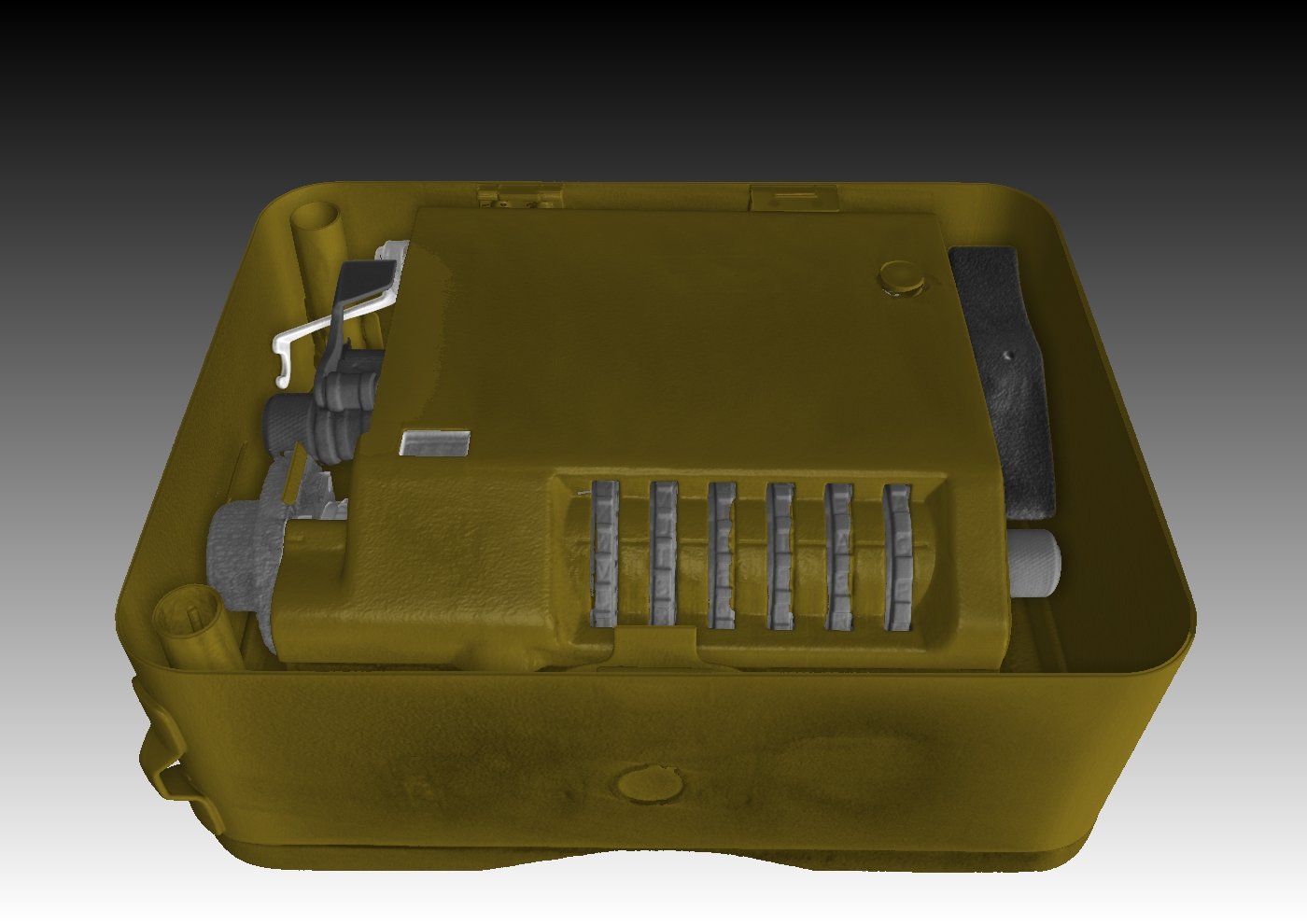
Hagelin M-209, Inv.-Nr.: 2019-397
The M-209 was developed by Boris Hagelin at the beginning of the Second World War. The purely mechanical cipher machine was small, handy and had an integrated printer. It was used by the US Army and is probably the most produced cipher machine worldwide.
With the help of CT images, different units of the same type can easily be compared . Deviations, structural changes or changes over time become visible and allow further analyses.
In the following, two versions of the Kryha Standard machine are compared on the basis of their CT data and their structural differences are made clear.
On the basis of a digital section of the casing, similarities and differences between the models can be clearly identified. For example, the disc on the right of the newer unit is fixed with significantly more screws. Moreover, additional mechanical changes have been made in the front part.
Inv.-Nr.: 62797 (~1926)
Inv.-Nr.: 2017-384 (~1952)
Deviations can be colour-coded and visualised by mapping/overlaying CT data sets.
The structural changes in the front part are striking. The deviations at the top of the (rotatable) cipher discs of the two units are due to the different positions of the discs and do not indicate structural differences.
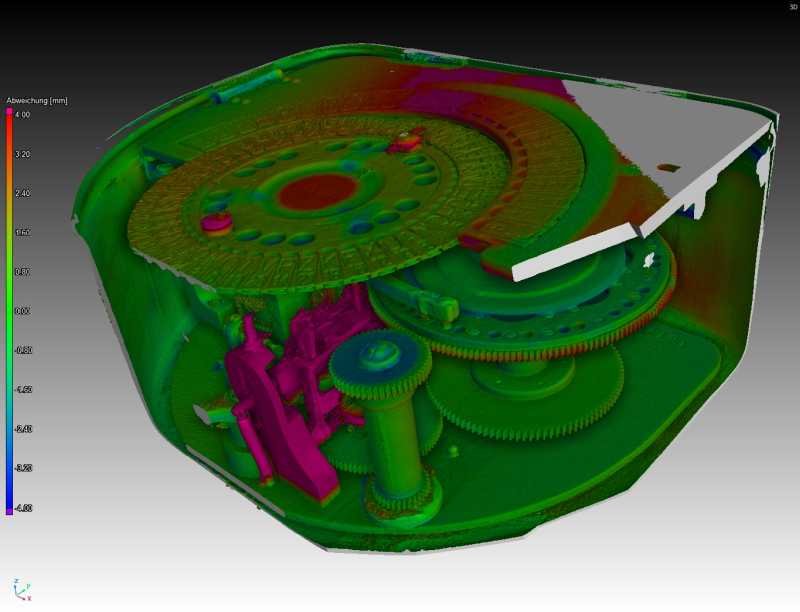
Colour-coded Nominal-Actual Comparison
Thanks to the 2D images that can be viewed frame by frame, sub-millimetre details can be recognised as well as digitally measured.
E.g. the mechanical safety mechanism in the pocket-sized HC-520 unit is clearly visible in the 2D-CT-images. To change the battery and open the device, a screw that is in contact with a "tamper switch" must be loosened. If this connection is broken, the internal crypto-memory is erased.
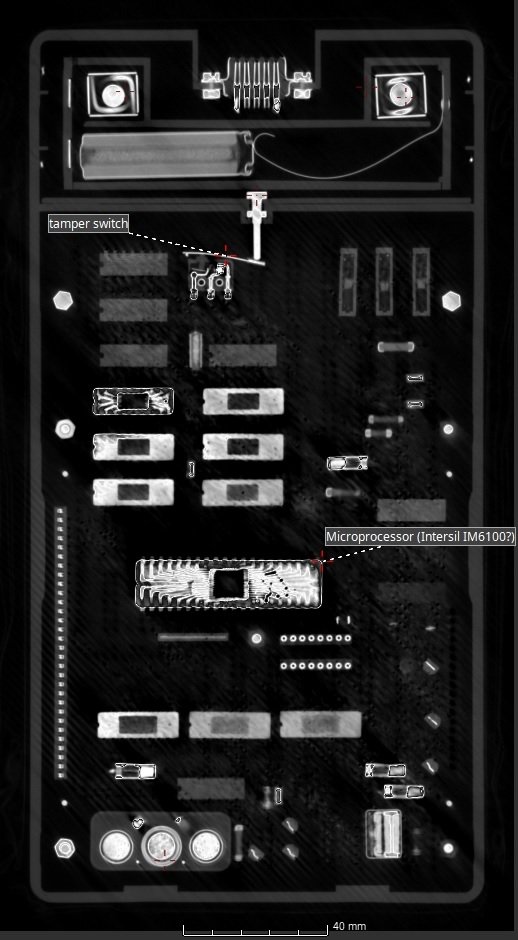
Electronical cipher device Hagelin HC-520, Inv.-Nr.: 2017-406
Surface models (surface meshes) can be created based on CT data. Due to the ability of X-ray and CT technology to penetrate materials, the surface must first be defined. In the case of an Enigma machine scanned in a wooden casing, either the wooden box, the casing of the Enigma or individual components can be determined as the "relevant surface". The results differ accordingly in the generated 3D surface model.
This surface determination defines signifcally the quality of the generated polygon mesh. The determination becomes more complex, more difficult and more error-prone the more similar the materials of the surface and the surrounding areas are. Inaccuracies in the surface determination are directly visible in the mesh. With complex technical machines and machines consisting of several (similar) materials, this is a greater problem than, for example, with technically less complex objects.
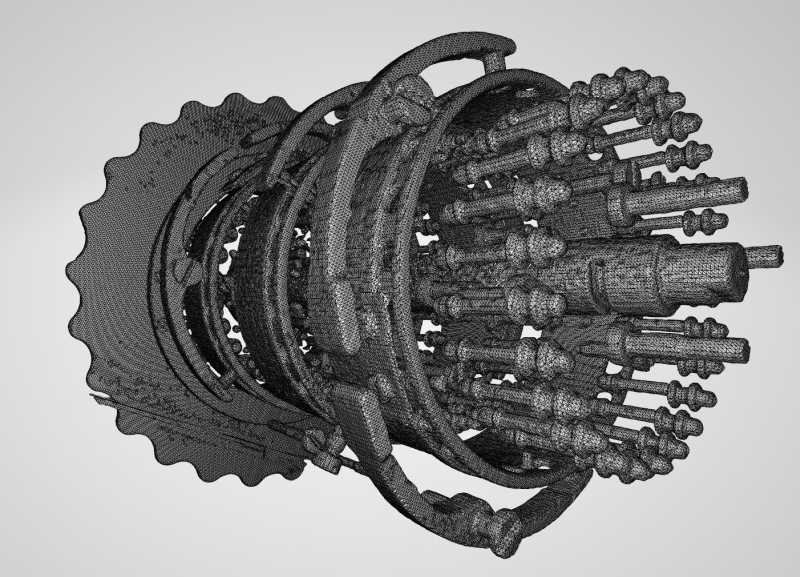
Mesh of an Enigma M4 rotor, Inv.-Nr. 2017-398
The supreme discipline of CT post-processing is the segmentation of individual components from a CT scan. Technically, this process is closely linked to the surface determination - thus, a segmentation can easily be made from a good surface determination. The segmentation of individual parts, especially the separation of identical materials, also offers the possibility of conveying complex mechanisms in a comprehensible way through visualisations and simple animations.
Analogous to surface determination, different materials can be segmented more easily than similar or even identical materials. For example, segmenting a wooden crank from a metal strut takes little effort, while separating individual, interlocking gears from each other takes a lot of time. and effort.
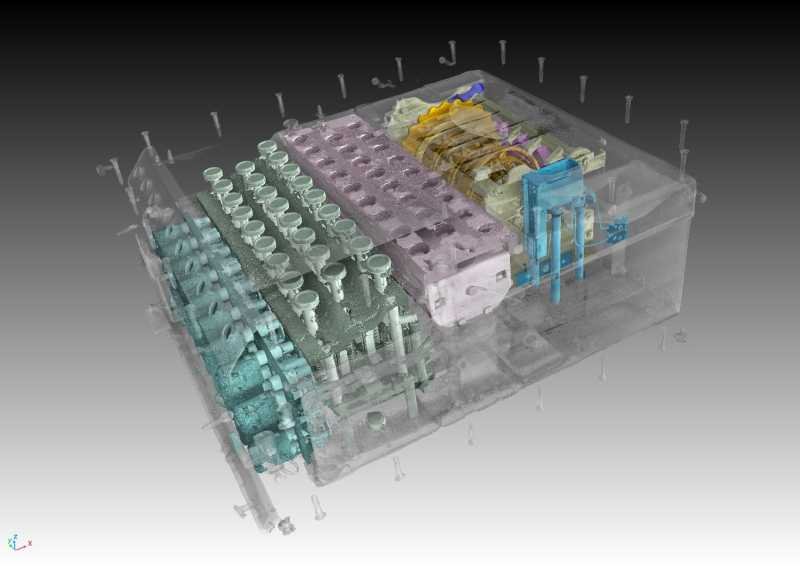
Segmented components. Engima M4, Inv.-Nr.: 2017-398

